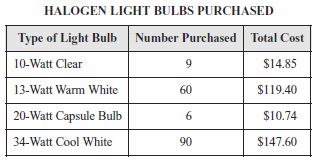General Information
Test Item Specifications
- Given data about sharks and the amount of food they eat, students will be able to solve for the unknown in percentage problems.
- Given information about a shark's growth, students will be able to graph coordinates and interpret a linear graph.
- Given the conversion factor, students will be able to convert from metric to English units.
Students will translate situations involving ratio and rate from real-world contexts to mathematical equations or expressions.
Students will compare rates and ratios to solve real-world problems.
Items will not include defining rate and ratio.
Items will not include inequality symbols.
Ratios may be presented in words or symbols (e.g., 2 to 3, 2:3, 2 out of 3, or 2/3).
Items should be set in a real-world context.
Ratios may be represented in various forms, such as simple drawings and multiplication tables.
Sample Test Items (1)
| Test Item # | Question | Difficulty | Type |
| Sample Item 1 | Mr. Gerard purchased different types of halogen light bulbs for the apartment building where he works. The information about the bulbs he purchased is shown in the table below.
Which type of light bulb costs the least amount per light bulb? |
N/A | MC: Multiple Choice |
Related Resources
Perspectives Video: Professional/Enthusiast
| Name | Description |
| Gear Heads and Gear Ratios | <p>Have a need for speed? Get out your spreadsheet! Race car drivers use algebraic formulas and spreadsheets to optimize car performance.</p> |
Problem-Solving Tasks
| Name | Description |
| Ratio - Make Some Chocolate Crispies | In this activity students calculate the ratio of chocolate to cereal when making a cake. Students then use that ratio to calculate to amount of chocolate and cereal necessary to make 21 cakes. |
| Space Math - Comparing Planets Orbiting Other Stars | This NASA lesson utilizes real world data about the size of planets orbiting other stars. Students are asked to use this data to compare the size of the planets to Earth and Jupiter. Lesson includes a visual representation and an answer key. |
Teaching Ideas
| Name | Description |
| Space Math: Estimating the Speed of a Tsunami | Students use real-world data from the 2011 Pacific Ocean earthquake and tsunami to estimate the speed of the tsunami as it crossed the Pacific Ocean. Students will also need to work through the issue of time zones and the International Date Line. |
| Calculating Sharks-SeaWorld Classroom Activity | |
Virtual Manipulative
| Name | Description |
| Planet Size Comparison: Ratio | Images of two planets selected on two drop-down menus with a display of their respective diameters and the applicable ratio. |
Parent Resources
Problem-Solving Task
| Name | Description |
| Ratio - Make Some Chocolate Crispies: | In this activity students calculate the ratio of chocolate to cereal when making a cake. Students then use that ratio to calculate to amount of chocolate and cereal necessary to make 21 cakes. |

